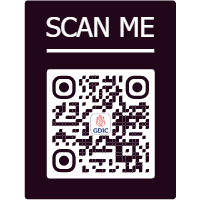
In this article, we will discuss about PET-CT as a diagnostic tool for Lung cancer and also some common questions related to PET-CT.
PET-CT is the short form of PET-CT scan is the short form of positron emission tomography (PET) and computed tomography (CT) that can be used an effective tool for the detection of Lung cancers. PET-CT scan is the non-invasive radiological diagnostic tool which is very effective in detecting the Lung cancers. The procedure creates 3D images that can identify the condition even at the early stage and can be treated. PET-CT uses radioactive tracer for the detection of Lung cancers and most common radioactive tracer used in FDG.
What is Lung Cancer?
Lung cancer is the abnormal growth of cells that effect the normal functioning of the lungs and can spread to other organs. This uncontrolled cell makes the mass of cells called tumours and these tumours create abnormality in the lungs and its functioning. Early detection of lung cancer is very important for the treatment of the cancer. In this case PET-CT plays an important role in the detection of cancers in the lungs. This is a radiological procedure, which uses radioactive tracers for the detection of any abnormality in the lungs.
What are the causes of Lung cancer?
There are various causes of Lung cancer like smoking, second hand exposure to the smoking, randon, Asbestos, air pollution, genetics, occupational hazards, medical conditions etc. are some of the common causes of the lung cancer. Heavy smoking and exposure to air pollution is one of the main causes of the lung cancer. But other causes like genetics which runs through genes in generations and is hard to stop. There are some medical conditions which can lead to lung cancer like tuberculosis; HIV, chronic lung disease etc. are some of the conditions which can also lead to lung cancer.
What is the Procedure of PET-CT Scan for Detection of Lung Cancer?
Lung cancer can be detected through PET-CT scan at the early stages which helps to treat and plan a treatment for the condition easily. In this procedure, the patient is administered with radioactive tracer for the detection of the lung cancer. The most common radioactive tracer used in the detection is 18F-fluorodeoxy-glucose (18F-FDG), this glucose gets absorbed by the cancer cells more quickly as compared to the normal cells. The tracer is administered to the patient 1 hour before going for the scan. Patient is advised not to rest till the tracer reaches the body. After 1 hour, patient is advised to lie on the table attached with the scanner and slides into the scanner. The machine uses the controlled radiations to create 3D images for the detection of disease or cancer.
Which Types of Lung Cancers Are Detected by PET-CT?
PET-CT (positron emission tomography -computed tomography) can detect different types of Lung cancers. The list of Lung cancers detected by PET-CT is:
- Adenocarcinoma of lungs
- Squamous cell carcinomas lungs
- Large cell carcinoma
- Adenosquamous carcinoma
- Sarcomatoid carcinoma
- Small cell carcinoma
- Combined small cell carcinoma
- Carcinoid tumours
Which Radioactive Tracer is Used in PET-CT Scan to Detect Lung Cancer?
There are various types of radioactive tracers that are used to detect the cancers. The specific radioactive tracer is used for the detection of specific cancer. In case of lung cancer detection the commonly used tracer is 18F-fluorodeoxy-glucose (18F-FDG). The tracer reaches the cells and is absorbed by the cells. The scanner detects the movement of the tracers and cells with abnormal metabolic activity are detected. These cells are classified as cancer cells and treatment for the same is specified as per the need.
What Does PET-CT Scan Shows in Lung?
PET-CT scans produce the 3D images of the lungs and other associated tissues. This helps in the detection of abnormalities in the Lung like:
- Cellular changes in the lungs
- Metabolic activity at the minor scale of lungs
- Reveals the functioning of the lungs
- Provides anatomical images of lungs for specific evaluation
- Detects abnormalities in the lungs etc.
Different Types of PET-CT Scans Available at Ganesh Diagnostic and Imaging Centre.
Here is the list of PET-CT scans available at Ganesh Diagnostic and Imaging Centre.
- Brain PET scan (Book Now)
- F-18 Choline PET Scan (Book Now)
- FDG-PET Scan (Book Now)
- DOTA PET CT Scan (Book Now)
- Whole Body PET Scan (Book Now)
- PSMA PET Scan For Prostate (Book Now)
- Dopa Brain PET Scan (Book Now)
- PET Viability Scan Cardiac (Book Now)
- Cardiac PET Scan (Book Now)
Conclusion
Lung cancer is also called bronchogenic carcinoma and occurs when there is uncontrolled growth of cells in the lungs. The condition can start from the lining of lungs and can reach to other parts of the body. There are various causes of lung cancer like smoking, passive smoking, exposure to air pollution, exposure to randon, Asbestos, genetics, occupational hazards, medical conditions etc. To detect Lung cancer through PET-CT scan procedure, patient is administrated with the radioactive tracer like 18F-fluorodeoxy-glucose (18F-FDG). After administration, patient is advised to wait for at least 1 hours so that radioactive tracer reaches to lungs. After scanning 3D images of lungs are produced, this gives a close look for the abnormalities and helps to detect the abnormalities at early stage. This also helps in effective and early treatment and controls the spread of lung cancer to other parts of the body.
Frequently Asked Questions (FAQ)
What is Lung Cancer?
Lung cancer is also called bronchogenic carcinoma and occurs when there is uncontrolled growth of cells in the Lung
What are the Causes of Lung Cancer?
Various causes of lung cancer include active smoking, passive smoking, exposure to environmental pollution, radon, asbestos, genetics, medical conditions etc.
Can PET-CT Scan detect Lung cancer?
Yes, PET-CT is effective diagnostic tool in detection of lung cancer.
Where to go for PET-CT Scan for Lung in Delhi?
Patient can visit Ganesh Diagnostic Imaging Centre for lung PET-CT Scan with heavy discounts. For more information and appointment, click here.









